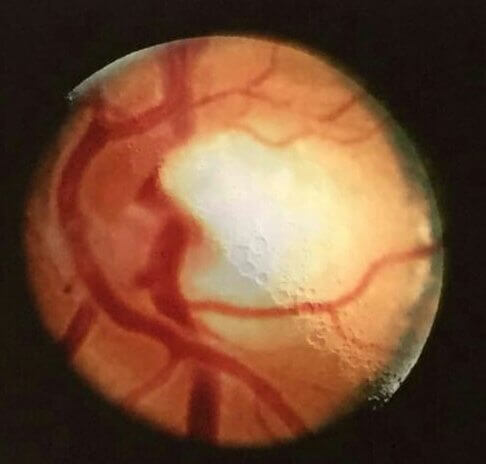In Latin and earlier in Greek sklera means something hard; in Medicine, something that has become hard to the point of being dead, and sclerotic is something that dies progressively and continuously, degenerates, and is replaced by tissue made up of collagen, elastic and reticular fibers. This is what happens after inflammation, different from the process called apoptosis, when tissue dies in an organized manner and is eaten by phagocytes.
In apoptosis, there is no inflammation, dead cells disappear. Cancer, in some instances, may be a disease of apoptosis slowed down. AIDS is apoptosis in certain white blood cells, accelerated. Presently, the major relationship of sclerosis and degeneration is with inflammation.
Tissue may become sclerotic through the slow and continuous death associated with degeneration even in health, the classical idea, or through inflammation, a rather modern concept. In inflammatory diseases, as arthritis, nephritis, pleuritis, myocarditis, myositis, sclerosis was associated with a degenerative and vascular phenomenon. Throughout the ages people thought of diseases of the nervous system as sclerotic, hopeless, degenerative, progressive, leading invariably to death, madness, paralysis.
During many centuries, advances in Medicine were held back by the darkness of the middle Ages, Christian, Arab, and Oriental conflicts. Santiago Ramon y Cajal used Golgi’s preparations early in the 20th century to create the neuronal theory that we now have as the most natural part of reality. In the 1970s European publications established that the most common form of dementia was Alzheimer’s, a disease of neurons, rather than of blood vessels.
As Medicine became closer to reality at the end of the 20th century, neurological diseases reached the forefront of scientific thought. One of these adaptations in conceptual thought was that the term sclerosis may be applied to hardening of any organ of the human body. The pathophysiological mechanism of that tissue becoming sclerotic will have been inflammatory or degenerative, or both. Of course, this may be applied to the middle or internal ear, including the auditory and vestibular components of the otological complex. In this little book I will go through the history of how Medicine evolved in the second half of the 20th century, to find that what was thought to be degenerative was found to be inflammatory.
Data indicates that degenerative diseases definitely have pathophysiological relations with inflammation in the clinical setting, not only in phantasmagoric laboratory set ups. In the case of amyotrophic lateral sclerosis, it has now been articulated in front line neurological journals that inflammation is a key part of the progress of the clinical process of the disease, and that they are closely associated with autoimmune diseases.
The chapters have been arranged to keep the book tight and simple. There are 10 chapters, each with approximately 10 pages, and a conclusion. After this introduction of the subject of the matter comes one on my involvement with the international scene on ethics, politics and economics in the field of Medicine in general, and of Medical Research specifically. That is followed by what still happened before research was fully institutionalized, what I call early immunology. Then comes the chapter on a partially fictionalized case report that changed the history of my involvement with these diseases. That is followed by the 2 chapters on the chimeras, one on their mythology and relationship to the history of human transplants. It must be one of the most interesting mythical and historical aspects in medical science, and one of the most provocative too. The second, on how the concept of the chimeras is basic to progress in human transplantation and in the treatment of cancer and modern immunology. Chapter 6 is very user-friendly, it describes how people aquire and live with immune diseases, especially MS. Chapter 7 is very clinical. It describes the diseases that come under the banner of “sclerotic”. Chapter 8 is very complicated and technical, it reviews modern neuroimmunology, to set the scene for the last 2 chapters to be simple. In chapter 9 the Johns Hopkins data on the use of high dose cyclophosphamide for graft versus host disease is presented, and in chapter 10 the MS and ALS data, mainly from my clinic in Curitiba, is presented.
On a separate note, I have had to evolve the use of my name and my clinic. I started publishing in 1979, as P Bittencourt. Since then, there have appeared a large number of people with names very similar to my various names. It turns out I have a very common name. Just in my close family there are 3 of us. The same goes for my clinic, Unineuro. There are unineuros everywhere in Brasil. That is the explanation for the recent use of my complete name, and a new name for my clinic.
Paulo Rogério Mudrovitsch de Bittencourt
Pontal do Sul and Curitiba, January to May, 2013
(imagem cortesia Dr. Irineu Antunes Neto)
Oliveira SAV, Castro MJMO, Bittencourt PRM. Slowly progressive aphasia followed by Alzheimer’s dementia: a case report. Arquivos de Neuro Psiquiatria 47 : 72- 75 , 1989
Bittencourt P, Richens A, Toseland PA, Wicks JFC, and Latham AN. Pharmacokinetics of the hypnotic benzodiazepine, temazepam. British Journal of Clinical Pharmacology 8: 37S-38S, 1979
M Suzanne and H Steller. Shaping organisms with apoptosis. Review. Cell Death and Differentiation 20, 669–675; 2013
Santiago Ramon y Cajal. 1899-1904. Textura del sistema nervioso del hombre y de los vertebrados. N. Moya. Madrid.
Santiago Ramon y Cajal. 1909-1911. Histologie du sistème nerveux de l’homme et de les vertébrées. Maloines. Paris. (Trad peur L Azoulay).



